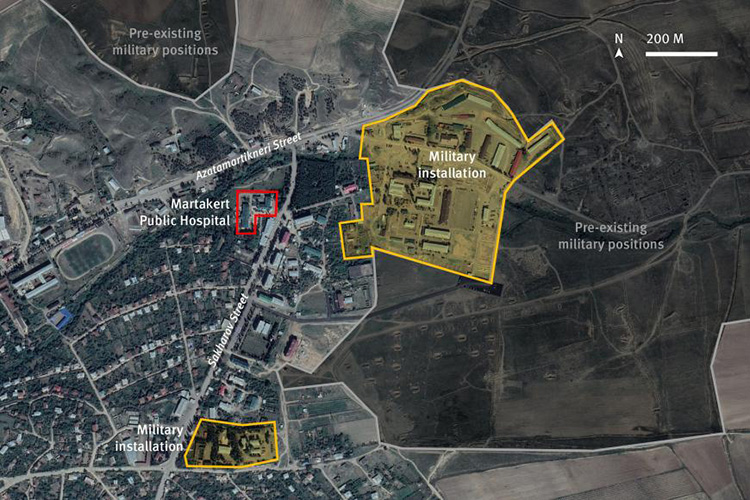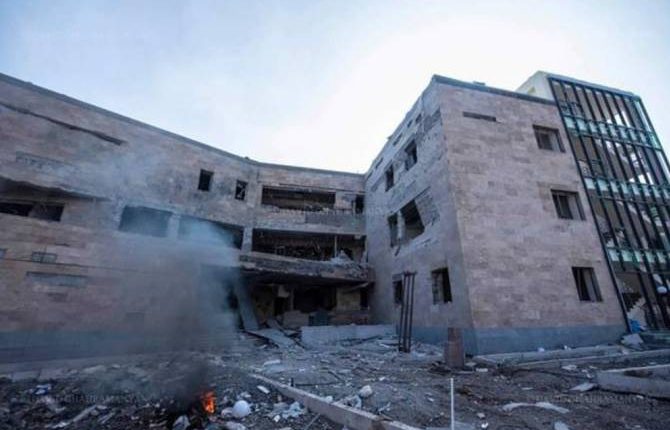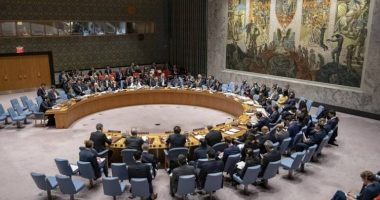NEW YORK — Three unlawful attacks on medical facilities by Azerbaijani forces during the six-week armed conflict in Nagorno-Karabakh have come to light in recent Human Rights Watch research in the region.
Human Rights Watch documented multiple unlawful strikes on a public hospital in Martakert in September through November 2020, and an unlawful strike on a military hospital in the town’s outskirts in October. The hospitals were very close to the front lines at the time.
The weapon used by Azerbaijani forces against the military hospital – a satellite-guided variant of an Israeli-supplied rocket artillery system called LAR-160 – suggests that the strike was intentional. The strikes on the public hospital, including with Grad rockets and cluster munitions, appeared indiscriminate.
The attacks damaged both hospitals and impeded medical work, but no one was wounded or killed in the attacks.
Human Rights Watch also documented a deliberate attack on September 28, apparently by Azerbaijani forces, on an Armenian military ambulance, in which assailants shot and killed a military doctor.
Human Rights Watch previously documented damage to two hospitals in Stepanakert, the capital city of Nagorno-Karabakh, due to Azerbaijan’s indiscriminate strikes in October.


The Human Rights Watch further says Azerbaijani rocket artillery hit a military hospital in Aghabekalanj, a village just southwest of Martakert city, along the main road, in an apparently deliberate strike on October 14, 2020.
Before being hit, the hospital had been providing first aid to the wounded – as many as 130 a day, hospital staff told Human Rights Watch – some of whom were then transported to Stepanakert for further treatment.
As Azerbaijani forces frequently shelled Martakert and surrounding areas during the conflict, patients were treated in the two-story hospital’s reinforced basement, where medical staff also slept.
Human Rights Watch visited the hospital in November and found that the attack had caused significant damage. A small structure by the gate was largely destroyed, and the medical workers’ housing in the back was severely damaged. The outer walls of the main building showed blast and fragmentation damage, and the windows were shattered.
Martakert’s public hospital, the R. Bazyan District Medical Association on the northern end of Sakharov Street also suffered extensive shelling damage during the six-week war.










